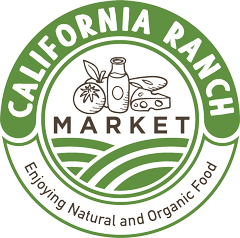
The Gluten Free Diet: Tips for Success
The gluten-free diet has gained popularity in recent years, and for good reason. For people with celiac disease or gluten sensitivity, avoiding gluten is essential to avoiding uncomfortable or even harmful symptoms. But for others, a gluten-free diet may simply feel better for their bodies.
Whether you're new to the gluten-free lifestyle or looking for tips to make it easier, this article will provide you with helpful strategies for success. We'll cover everything from understanding what gluten is and where it's found, to tips for meal planning, grocery shopping, and cooking delicious gluten-free meals.
The Basics of a Gluten-Free Diet
To follow a gluten-free diet, it's important to understand which foods contain gluten and which do not. Some common sources of gluten include:
- Wheat, including all varieties (e.g. spelt, kamut)
- Barley
- Rye
- Triticale (a hybrid of wheat and rye)
Gluten is also commonly found in processed foods, such as:
- Bread, pasta, and other baked goods
- Breakfast cereals
- Crackers and chips
- Soups and sauces
- Salad dressings and marinades
However, many whole foods are naturally gluten-free, including:
- Fruits and vegetables
- Meat, poultry, and fish
- Eggs
- Nuts and seeds
- Legumes (e.g. beans, lentils)
In addition, there are many gluten-free grains and alternative flours that can be used as substitutes for wheat flour. These include:
- Rice flour
- Corn flour
- Potato flour
- Sorghum flour
- Quinoa flour
- Almond flour
- Coconut flour
When starting a gluten-free diet, it's important to focus on incorporating these whole, naturally gluten-free foods into your diet, rather than simply relying on processed gluten-free products. By doing so, you can ensure that you're getting a wide range of nutrients and avoiding potential nutrient deficiencies that can occur on a restricted diet.
Tips for Success
Following a gluten-free diet can be challenging, but with the right strategies and resources, it can also be a rewarding and healthful way of eating. Here are some tips for success in following a gluten-free diet:
A. Start with whole, naturally gluten-free foods
One of the best ways to ensure a healthful and varied gluten-free diet is to focus on whole, naturally gluten-free foods. This includes incorporating plenty of fruits, vegetables, and other whole foods into your diet. These foods are naturally rich in vitamins, minerals, and fiber, and can help to support optimal health. In addition, you'll want to include gluten-free sources of protein, such as lean meats, fish, and legumes, and healthy fats, such as avocados, nuts, and seeds.
B. Read labels and do your research
To avoid accidentally consuming gluten, it's important to carefully read food labels and research products before consuming them. This can be especially important for processed foods, which may contain hidden sources of gluten. When reading labels, look for the words "gluten-free" or "contains less than 20 parts per million (ppm) of gluten". If a product is not labeled as gluten-free, check the ingredient list for potential sources of gluten, such as wheat, barley, or rye.

There are also many online resources and apps available to help you identify gluten-free products and ingredients, and to find gluten-free restaurants and recipes. Some popular resources include the Gluten-Free Certification Organization, and the Celiac Disease Foundation.
C. Experiment with gluten-free alternatives
One of the biggest challenges of following a gluten-free diet is finding substitutes for gluten-containing foods, such as bread, pasta, and baked goods. However, there are many gluten-free alternatives available, including rice pasta, gluten-free bread, and almond flour baked goods. Experiment with different products and recipes to find ones that you enjoy and that fit your dietary needs.
It's also important to note that many natural, whole foods can serve as substitutes for gluten-containing foods. For example, sweet potatoes or cauliflower can be used in place of traditional pizza crust, and zucchini noodles can be used in place of pasta.
D. Be prepared for social situations
Eating gluten-free can be especially challenging in social situations, such as parties or dining out. To avoid feeling left out or hungry, it's important to plan ahead and communicate your dietary needs to others. Consider bringing a gluten-free dish to a potluck or party, and always research restaurants ahead of time to ensure that they offer gluten-free options. You can also communicate your dietary needs to your server or the restaurant manager to ensure that your meal is prepared safely and without cross-contamination.
E. Seek support
Starting a new diet can be challenging, so it's important to have a support system in place. Consider joining a local support group for people with celiac disease or gluten intolerance, or connect with other gluten-free individuals online. You can also work with a registered dietitian or nutritionist who specializes in gluten-free diets to ensure that you're meeting your nutrient needs and following a healthful and sustainable diet.
Final Thoughts
Remember to work with a healthcare professional to ensure you're meeting your nutrient needs while following a gluten-free diet. Resources such as online support groups, recipe websites, gluten-free certification organizations, and specialty food stores like California Ranch Market can also help you navigate this lifestyle.
Visit California Ranch Market for the largest selection of gluten-free products in Los Cabos, available at our two physical locations or online at californiaranchmarket.com. With the right strategies and support, a gluten-free lifestyle can be both delicious and healthful.



